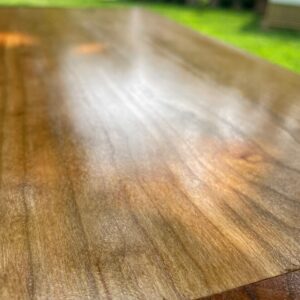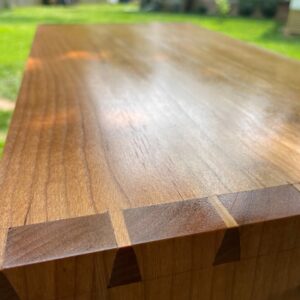texture in shellac finish with critter spray gun
Hi there,
I purchased a critter spray gun and appropriate compressor. I’m spraying shellac with it for the first time on a project. What I’m noticing is the finish is very consistent but almost has a texture to it (like very very tiny dots). My assumption would have been it’d be glass like. Don’t get me wrong the finish feels smooth but when you look at it very closely, it just doesn’t look right. I’ve attached some pictures so would appreciate your thoughts.
i’ve tinkered with the amount of psi but it goes berserk (lots of overspray) if it’s higher than 30 psi.
Could be just me and that’s just how it goes on?
Thanks,
JD

















Replies
I'm not a spray gun expert and I have never used the Critter (read about it). However, I have sprayed shellac with an air brush and I think the Critter is just an overgrown air brush. From my air brushing experience, I'm guessing that you might be moving too fast and you may be too far away. Shellac dries fast and you need to leave a wet enough coat so that it has a chance to level out before it sets up. You need to strike a balance between too heavy and too wet so that you get runs and too thin so that it dries too fast. Also, try thinning the shellac less. Also, I think there is something you can add to the shellac that acts as a retarder. Check out shellac.net.
I will agree with bilyo's line of thinking.
I had a critter and was no impressed with it. Read good things about it but it just didn't spray well for me. I was never happy with it and finally gave up on it after few attempts.
Shellac needs to be sanded between coats. It's not going to spray perfectly flat no matter what.
I would add a retarder and see if that helps flatten.
Shellac does not need to be sanded to adhere to previous coats, the new coat will melt into the previous coat.
The texture you're getting from the sprayer could be many things. The sprayer not aerosolizing the finish well enough. The shellac being to thick, meaning it is drying before it can level itself out.
There are the usual things to consider as well, like temperature, humidity, solvent and wood preparation to name a few.
Always test on sacrificial material
Controlling over spray is hard to learn. The atomized particles dry so quickly they can turn to dust before landing. Create a system so that as you spray, most overspray will land on an area that has not been hit yet. The wet shellac mix will melt the dust. But if the dust lands on a section that was just sprayed and already drying, it won’t integrate the same way. Hope that makes sense. Personally, I just sand and top with wax or a rub coat.
Could it be critters in the spray gun? ;-)
I think what you are referring to is known as "orangepeel" and is usually caused by not thinning enough. Can also be caused by too much air pressure. Always experiment on some scrap as finishes and sprayers are different.
Shellac thinned with ethanol tends to crater around any depression (grain). It does not flow out very well either by spray or by brush. Your result looked pretty good for spraying shellac. If you change the solvent to something slower, like butyl alcohol (C4H9OH), it will flow out better. You could experiment by starting with adding 25% butyl to your normal alcohol and see if it helps. Maybe increasing in increments.
This forum post is now archived. Commenting has been disabled